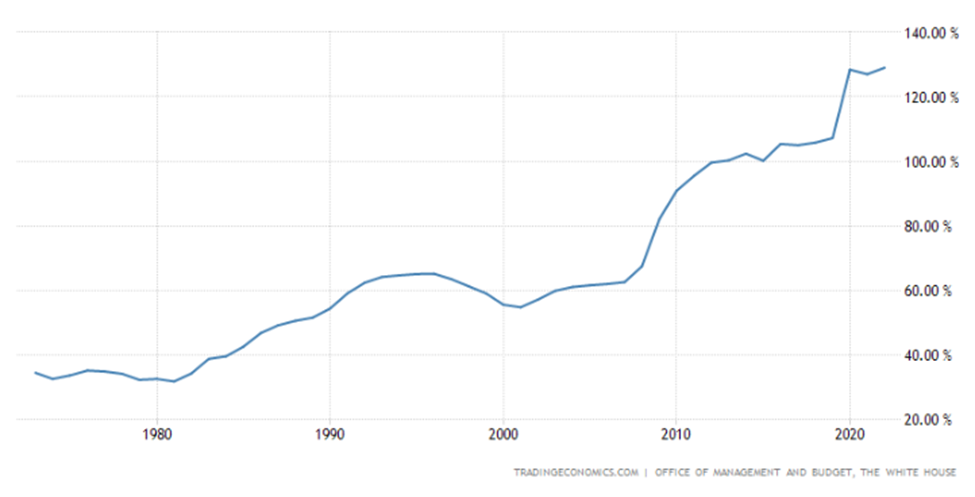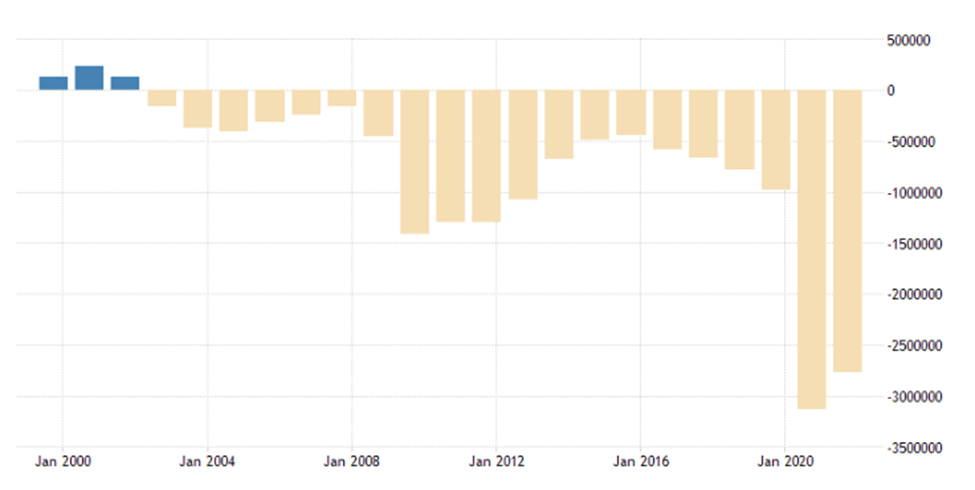Today it became pointedly clear that inflation is back on the rise in a broad tide that is seeping slowly through the marketplace. Several critical parts of CPI came in higher, finally spooking stocks to plunge again and Treasury yields to take a truly ugly turn in the marketplace. After today’s CPI report, we saw the ugliest auction of 30-year Treasury bonds in years. Stocks again got the memo that they had tried in recent days to put through the office shredder.
This was a clear enough turn in inflation that I will use this week’s “Deeper Dive” to parse the ways in which inflation and US debt are teaming up to take down the economy, recent self-inflicted brain deaths in the stock market notwithstanding. With little time today to dig into it today, let me quote Paul Tudor Jones from one of today’s articles who is legendary for seeing the surprise 1987 “Black Monday” crash coming:
The fiscal situation is very different from other cataclysmic events we’ve suffered as a country…. I don’t know if we’ll have a Minsky moment in the bond market… that point of recognition, but we’re going to have the grinding reality that with 122% of debt-to-GDP, as interest costs go up…, you get into this viscous circle where higher interest rates cause higher funding costs, which causes high debt issuance, which causes further bond liquidation, which causes higher rates… Our interest bill is very shortly going to exceed our defense spending in just a couple of years…
Sounds just like me, doesn’t it?
So does this part, which blames both parties equally:
The two guys that put us in this situation… are the ones that are our choices for President… Trump in 2016… was going to cut taxes and cut spending. Well along the way, cutting taxes was a great idea, but he didn’t cut spending. He inherited a 2.6% budget deficit. In 2019, it was 4.8% before the pandemic, so it almost doubled, and then in 2020 it went to 14% with the pandemic. Biden, when he got elected said… ‘You had two or three Oreos, I’m gonna eat the entire package….
We’re probably going to go into recession sometime in the first quarter of next year, probably because the bond market, simply through supply and demand, is going to deliver more rate hikes….
My last “Deeper Dive” was all about how this US sovereign debt crisis is now bearing down on us to do exactly that, as well as corporate and personal debt crises. Paul Tudor Jones digs into all of that today and so does another article from Quoth the Raven:
People should expect the world—and with it, financial markets—to be on the edge of volatility like never before…. While interest rates aren't at historical highs, as many of my readers pointed out in the comments of my last article, they are the highest they've been with the largest amount of debt outstanding we've ever had. This chart of U.S. debt-to-GDP helps make the point of where we stand:

If GDP falls in a recession as Tudor Jones and I firmly believe is imminent (a second dip from my point of view after what even a great many mainstream financial writers eventually came to call a “technical recession” in 2022), then the debt-to-GDP ratio will rapidly become worse as the denominator in that ratio declines.
Just take a look at our deep, deep deficits:

We have fallen off a deficit cliff — one so steep and deep that it makes the massive deficits deployed to escalate the economy back out of the Great Recession look like half-pints. And we are not even back in an actual recession yet (as measure by GDP anyway). In fact, we are in — according to Powell, Yellen and Biden — a rocking good economy. So, just wait until you see what happens to those deficits and the debt the create when GDP actually falls, taking the denominator of the debt-GDP ratio down while stimulus spending suddenly sends the numerator (debt) soaring!
That vicious circle Tudor Jones describes is going to whip up some high-velocity energy in a hurry.


